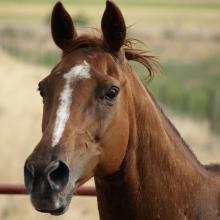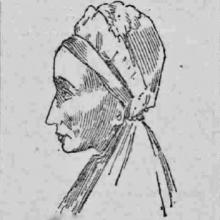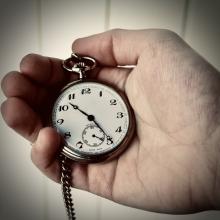
1894
EDINBURGH GARDENER SUES FOR DIVORCE.
Lord Wellwood in the Court of Session to-day heard evidence in an action for divorce by James Cruickshanks, gardener, No. 3 St Andrew’s Lane, North St Andrew Street, Edinburgh, against his wife, Maggie Finningham or Cruickshanks, residing in Stranraer, and also against Alexander M’Kenzie, grocer, Sandhead, Stoneykirk, Wigtownshire.
Before the case was opened the parties agreed that in the event of adultery being proved, the pursuer was to receive payment of £50 as damages, and £70 towards expenses, and that an account of £40 for groceries supplied to the defender by the co-defender should be wiped out.[1]
Pursuer said he was married to the defender at Stoneykirk in July, 1884. Four children had been born, all of whom are alive. He and defender lived at Stoneykirk and Sandhead down to the spring of 1892. In 1891 he was displeased to see an undue intimacy between his wife and the co-defender. His wife did washing for the co-defender, and he thought she was oftener about the co-defender’s house than was required for the washing. She used to go to the co-defender’s after she had given him his tea, and she would stay till ten or eleven at night.
He left her in consequence of her conduct in the end of March or beginning of April, 1892. He had got notice from home that his wife gave birth to twins in March, 1893. M’Kenzie was registered as their father. The registrar at Stoneykirk stated that the defender and co-defender both signed his book. Both children are now dead. The co-defender admitted in the witness-box that he was the father of the twins.
Decree of divorce was given, tne pursuer was awarded the custody of the children.
Edinburgh Evening News, 19 January 1894
[Image: Cézanne, Wikipedia, creative commons.]
[1] In total, about £13,128 today, or 484 days’ wages for a skilled tradesman in 1894.
*****
EDINBURGH HORSE DEALER IN DIFFICULTIES—In the Edinburgh Bankruptcy Court to-day before Sheriff Orphoot—Adam Dickson, horse dealer, 8 Scotland Street Lane, Edinburgh, was examined under a petition for cessio at the instance of a creditor.
In reply to an agent the debtor stated that he had been in business for about ten years as a horse dealer. He never kept any books. He had no horses at present. During last year he had four or five horses at a time.
The petition was granted. The state of affairs showed liabilities at £252 5s 3d, assets £221 9s 6d, being a deficiency £30 16s 3d.[2] Mr J. Craig, C.A., was appointed trustee.
Edinburgh Evening News, 25 January 1894
[2] A deficiency equivalent today to about £2,500, or 93 days’ wages for a skilled tradesman in 1894. According to the Dictionary of the Scots Language, Cessio Bonorum is 'a legal process whereby a debtor may escape imprisonment if he surrenders all his means and is innocent of fraud.'
*****
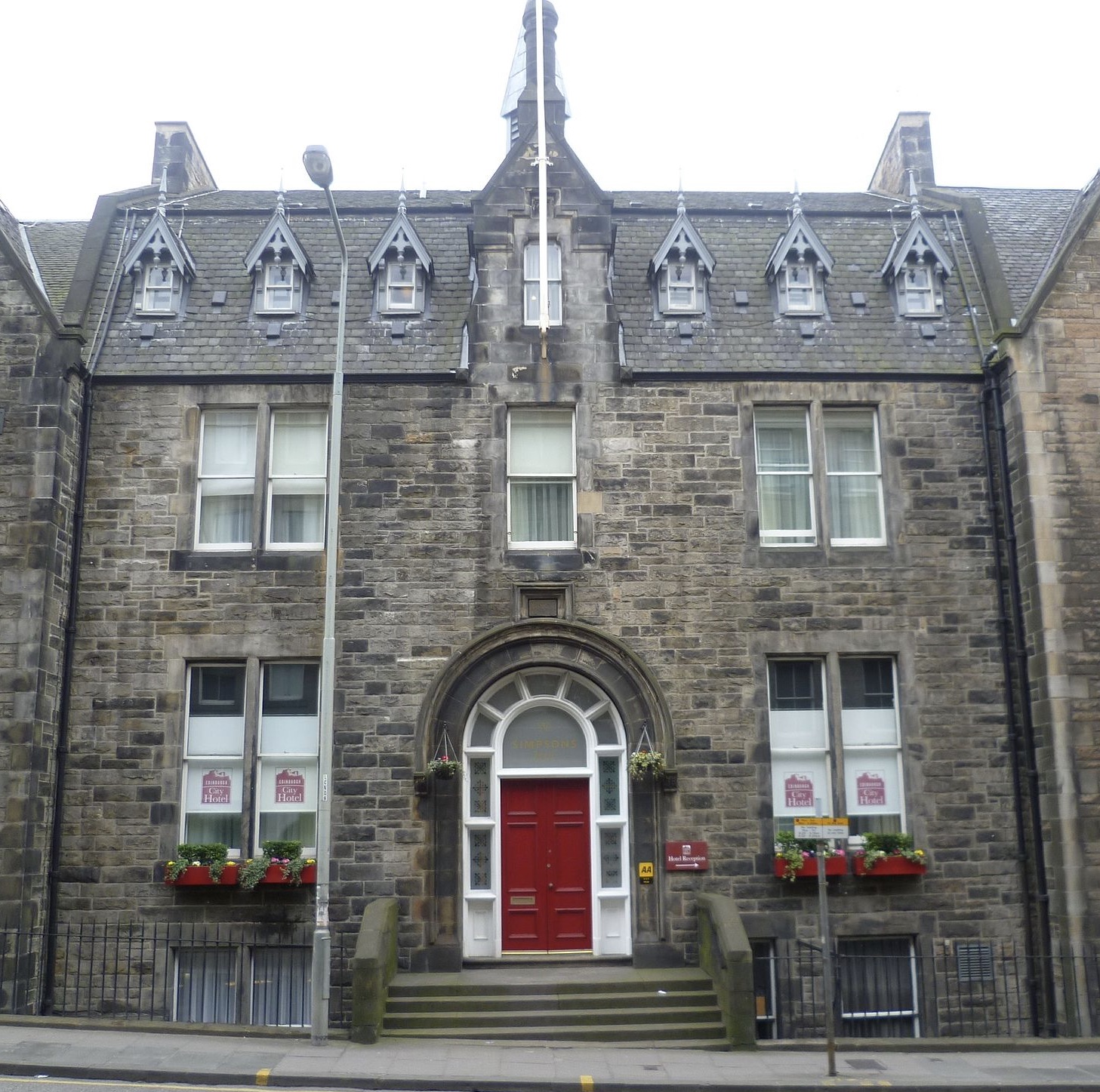
AN ALLEGED FRAUDULENT COLLECTOR.
In the Edinburgh Police Court to-day, John Sinclair, Shrub Place Lane, was brought to the bar and remitted to the sheriff on a charge of committing several acts of theft in Edinburgh and Leith.
Sinclair was for over 20 years collector for the Simpson Memorial Maternity Hospital. This post he held until March, 1892, when he was convicted in the police court of embezzling the funds of the hospital.
On 26th January last, it is alleged that accused called upon a gentleman and asked a subscription for the hospital. The gentleman became suspicious, and, on questioning Sinclair, the latter ran off. The gentleman made after Sinclair, caught him, and handed him over to the police. The constables found Sinclair in possession of a subscription book, which he attempted to tear up.
It is alleged that Sinclair has received various sums, amounting in all to £2 4s 6d,[3] between October, 1892, and 23d January last, by pretending that he was collector for the hospital.
Edinburgh Evening News, 29 January 1894
[Image: Kim Traynor, Wikimedia, creative commons.]
[3] About £183 today, or 6 days’ wages for a skilled tradesman in 1894. The Edinburgh Lying-in Hospital at Park House in Lauriston Place ran from 1793 to 1842, helping poor women in childbirth. It was replaced by the Edinburgh Royal Maternity Hospital from 1846 to 1879. The Edinburgh Royal Maternity Hospital and Simpson Memorial Maternity Hospital opened in 1879. The new faccility offered purpose-built accommodation and specialist obstetric care.
*****
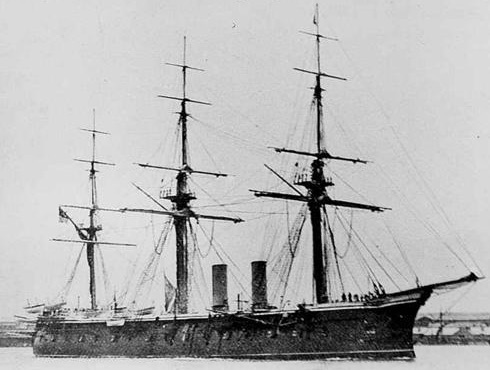
INGENIOUS THEFT FROM AN AUTOMATIC MACHINE.
IN THE EDINBURGH POLICE COURT TODAY—Sheriff Rutherfurd on the bench—two lads, named Andrew Masino and William Yule, residing at 34 Chambers Street and 12 East Arthur Place, were charged with having stolen 12 packets of chocolate and four packets of toffee from an automatic machine at Princes Street Station.[4]
There was a previous conviction against Masino. Accused both pleaded guilty.
They were seen gathering pieces of tin in Canning Street Lane, which they placed on the tramway rails for the cars to flatten. They then gathered them up, and went to the railway station, where they dropped the pieces of tin into the slot of an automatic machine, and took out the sweetmeats.
It was stated that Masino was a deserter from H.M. training ship Caledonia,[5] and that there was a warrant issued for his apprehension. The case against him was continued till to-morrow. Yule was put under the First Offenders’ Act.[6]
Edinburgh Evening News, 14 March 1894
[Image: Great War Forum.]
[4] Princes St railway station operated at the west end of Princes St (next to the Caledonian Hotel) from 1840 to 1965. Andrew was the son of Felippo Masino, whose Italian quadrille band—‘Music supplied for Balls and Evening Parties, moderate terms’—began advertising in the Scotsman in December 1877. In this year, Felippo’s first child John Joseph was born. Thereafter, he and wife Betsy Young had children with almost metronomic regularity until 1901: 4 girls and 7 boys. They lived mostly at 10 Merchant St and 34 Chambers St, with a brief intermezzo at 2 Broughton Pl around 1898. The boys were frequently in trouble for petty crimes: John (born 1877) was fined for theft in 1898 (see News from the Mews, 17.11.1898), and again, with brother Leopoldo Vittor (born 1887), getting 3 days in the cells and 6 stripes, respectively, in 1899 (Scotsman, 19.4.1899); Andrew (born 1879) was sent to prison for 5 years for stealing his father’s ring (Edinburgh Evening News, 26.9.1893); Angilo Antonio (born 1885) was sentenced to a month for housebreaking (Edinburgh Evening News, 31.1.1901). Andrew, now a retired electrician and widower, died on 12.12.1974 at the County Hospital in Alloa. For reasons which are unclear, he had changed his surname to Young (his mother’s maiden name), and the birth date on his death certificate (1885, SR Deaths 460/ 433) did not match that on his birth certificate (1879, SR Births 685/4 462).
[5] HMS Impregnable was refitted with updated armaments as HMS Caledonia, a Royal Navy training ship for boys, in September 1891. She had a complement of 171 officers, men and boys, and was moored at Port Edgar on the Forth from December 1891.
[6] The Probation of First Offenders Act, 1887 involved courts releasing juvenile and non-serious offenders on condition that they be supervised by some representative of a religious organisation.
*****
THE HEIGHT OF SCHOOL BUILDINGS.
The Streets and Buildings Committee recommended that sanction should lie given to the proposal to raise the height of the building of the Edinburgh Ladies’ College in Young Street Lane.[7]
Dean of Guild Miller opposed the recommendation because the street was only 22 feet wide, and the height of the building should only be 33 feet, whereas it was proposed to raise it to 54 feet.
Mr Cranston also objected to the recommendation and said that the worst feature of the subject was that the Merchant Company had brought up opposition. If this were granted others would able to claim the same privilege. Treasurer M’Crae opposed the recommendation. He did not see how they could consistently grant this unless they were prepared to grant others.
A long discussion took place. On a division, the recommendation was approved by 18 votes to 9.
Edinburgh Evening News, 15 May 1894
[7] The premises backed onto the school's main site at 70, 72, 73 Queen St. The north side of the lane remains considerably higher than the south to this day. In 1944 the establishment was renamed The Mary Erskine School after one of its co-founding benefactors.
*****
DEATH FROM POISON.—Yesterday evening John Jack, 26 years of age, who resided aat 6 New Broughton, Edinburgh, was taken to Edinburgh Royal Infirmary, suffering from an overdose of poison. He died during the night.
Edinburgh Evening News, 5 June 1894
*****

ALTERATIONS ON ST MARY’S CATHEDRAL.
At Edinburgh Dean of Guild Court to-day— Dean of Guild Miller on the bench—there were applications for warrants, seven of which were granted.
These included an application by the proprietors of St Mary’s Roman Catholic Cathedral and Archbishop Macdonald to remove the priest’s house adjoining the west end of the church, and to erect a chancel on the site, with vestries on the north side and subway under, communicating with their property at York Place. Also to lower the sills of windows on the north side of the church, and erect a tower at the north-east comer of the church, adjoining Broughton Street and Chapel Lane, to erect a baptistry at the north-east corner, adjoining Broughton Street and the Theatre-Royal, and to take down and erect a choir gallery in the church.
They also asked for power to make several alterations at York Place and to make a sub-way passage leading to Mary’s Church. Interim warrants were granted for the alterations with the exception of the sub-way.[7]
Edinburgh Evening News, 28 June 1894
[7] Popular myth has it that part of the purpose was to obviate clerics suffering sectarian abuse on the street. Permission was eventually granted for the subway, and it remains in use today.
*****

“SISTERS OF CHARITY” IN EDINBURGH.
A new community of nuns have taken up their abode in Edinburgh. Their services have been secured by the clergy of St Mary’s Cathedral, Broughton Street.
The Sisters of Charity, as they are designated, will take charge of the schools in York Lane and Albany Street, and will visit the sick and poor.[8]
The sisterhood was founded by St Vincent of Paul, in 1634, at Paris, and now possesses 1000 convents and over 10,000 sisters throughout the world, and the peculiarities of their dress—the white hood with streaming cornettes—are well known.
The Sisters of Charity, who take up their abode in Albany Street, come from Paris and London. They will be accompanied by Sister Mary Howard, sister of the Duke of Norfolk, who will see the work begun in Edinburgh.
Edinburgh Evening News, 31 August 1894
Image: Wikipedia, creative commons.
[8] The Catholic Girls’ Schools were at 3 York Lane and 37 Albany St. See News from the Mews 36 (1.7.1889).
